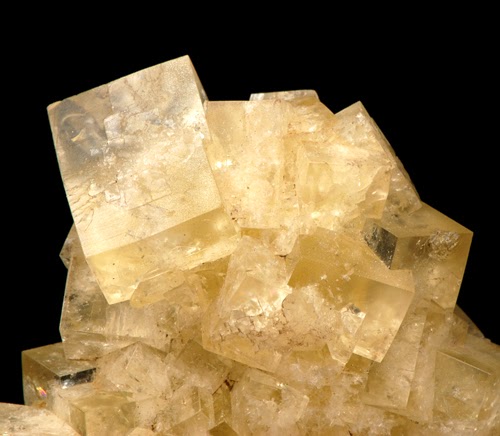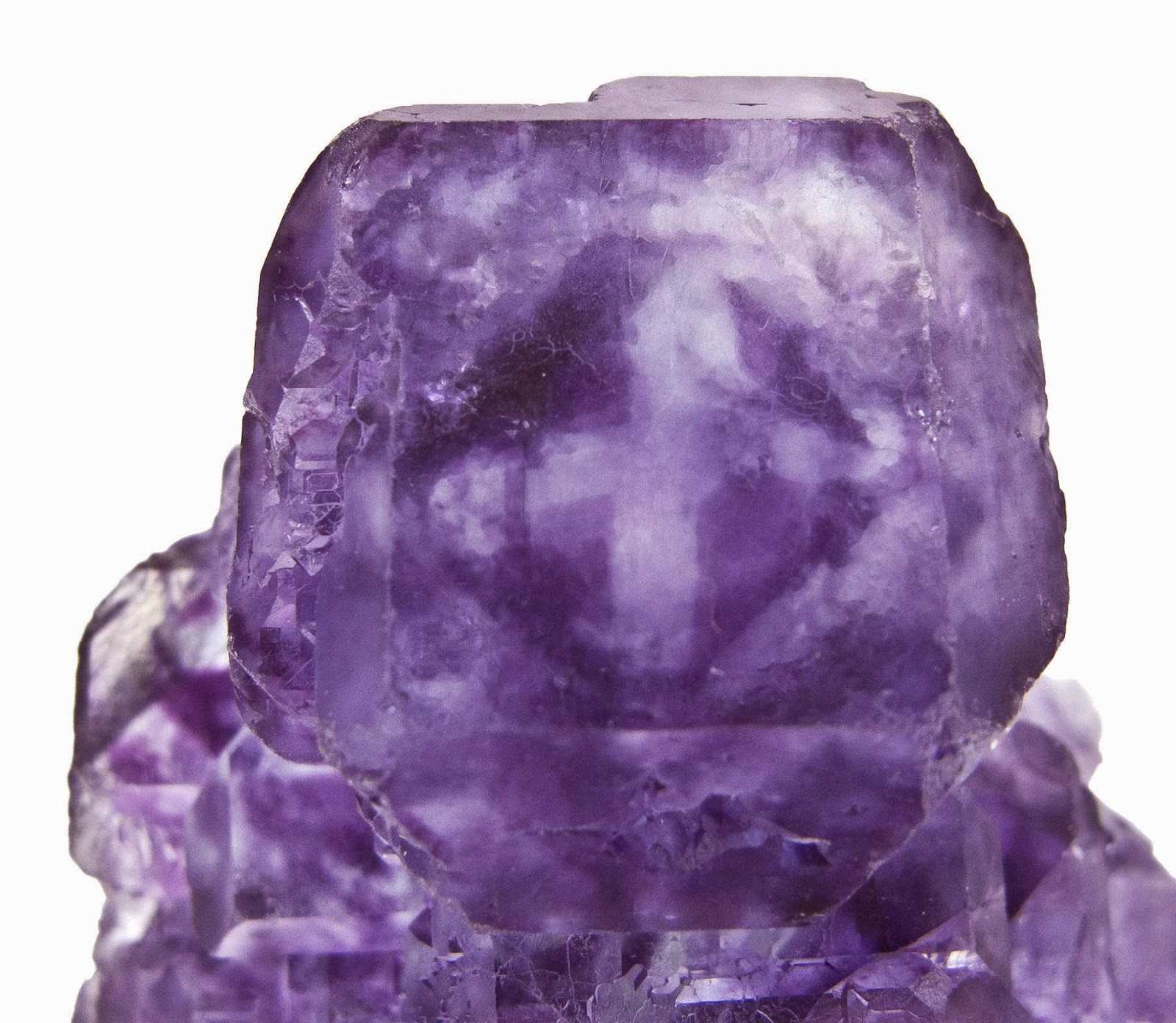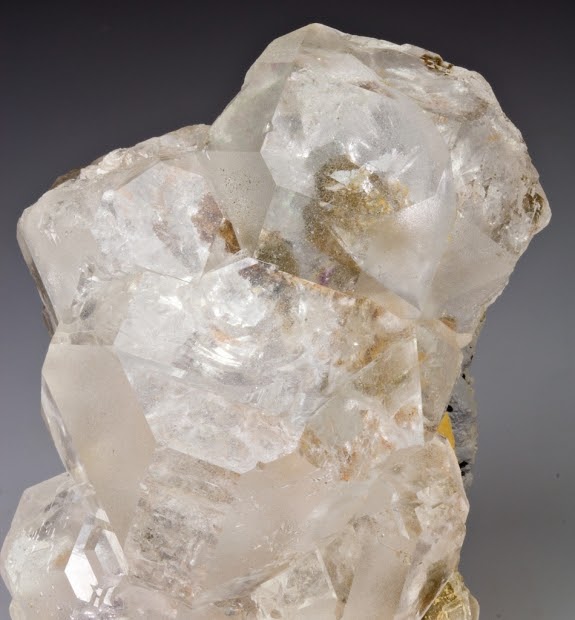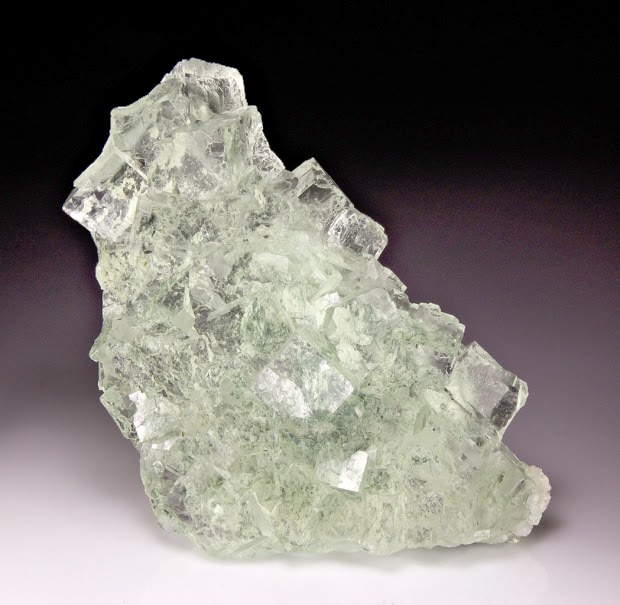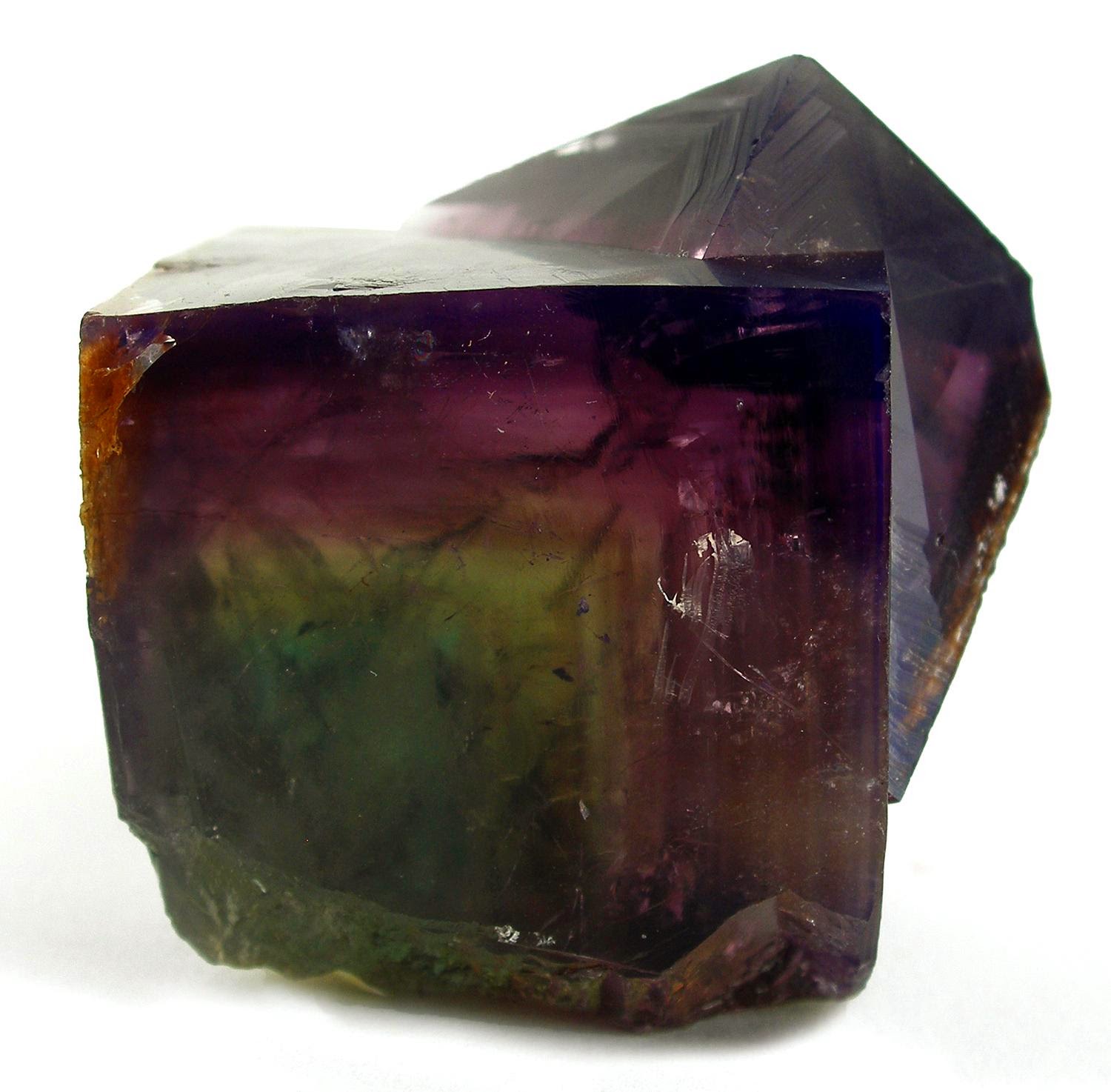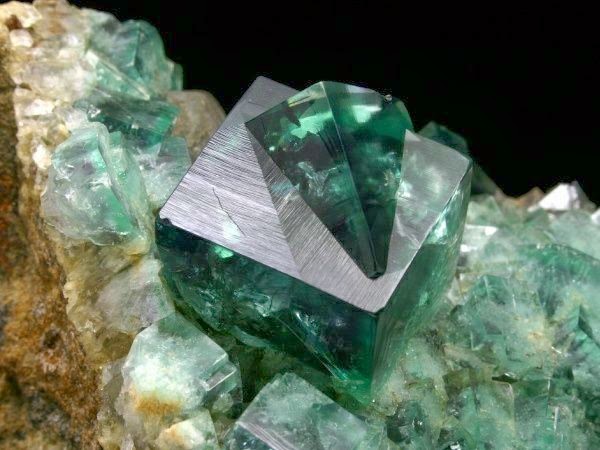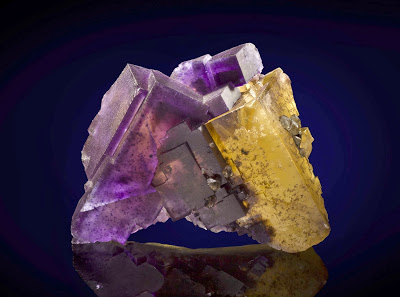
Chemical Formula: CaF2
Locality: Common world wide.
Name Origin: Named after its composition containing fluorine (Latin, fluere = “to flow”).
Fluorite (also called fluorspar) is the mineral form of calcium fluoride, CaF2. It belongs to the halide minerals. It crystallizes in isometric cubic habit, although octahedral and more complex isometric forms are not uncommon.
Fluorite is a colorful mineral, both in visible and ultraviolet light, and the stone has ornamental and lapidary uses. Industrially, fluorite is used as a flux for smelting, and in the production of certain glasses and enamels. The purest grades of fluorite are a source of fluoride for hydrofluoric acid manufacture, which is the intermediate source of most fluorine-containing fine chemicals. Optically clear transparent fluorite lenses have low dispersion, so lenses made from it exhibit less chromatic aberration, making them valuable in microscopes and telescopes. Fluorite optics are also usable in the far-ultraviolet range where conventional glasses are too absorbent for use.
Physical Properties
Cleavage: {111} Perfect, {111} Perfect, {111} Perfect
Color: White, Yellow, Green, Red, Blue.
Density: 3.01 – 3.25, Average = 3.13
Diaphaneity: Transparent to subtranslucent
Fracture: Uneven – Flat surfaces (not cleavage) fractured in an uneven pattern.
Hardness: 4 – Fluorite
Luminescence: Fluorescent, Short UV=blue, Long UV=blue.
Luster: Vitreous (Glassy)
Streak: white
Photos :
